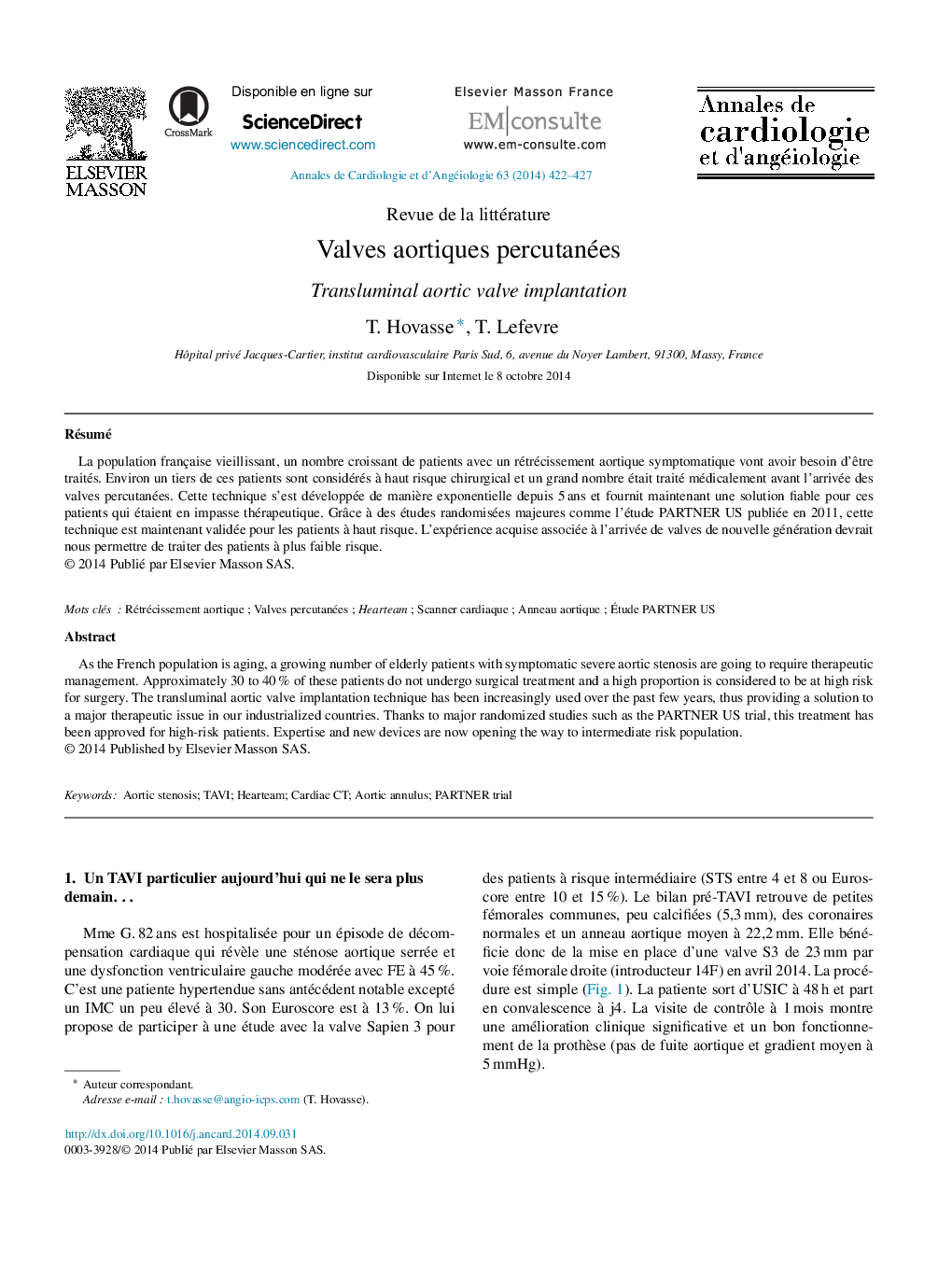| Article ID | Journal | Published Year | Pages | File Type |
|---|---|---|---|---|
| 2868552 | Annales de Cardiologie et d'Angéiologie | 2014 | 6 Pages |
RésuméLa population française vieillissant, un nombre croissant de patients avec un rétrécissement aortique symptomatique vont avoir besoin d’être traités. Environ un tiers de ces patients sont considérés à haut risque chirurgical et un grand nombre était traité médicalement avant l’arrivée des valves percutanées. Cette technique s’est développée de manière exponentielle depuis 5 ans et fournit maintenant une solution fiable pour ces patients qui étaient en impasse thérapeutique. Grâce à des études randomisées majeures comme l’étude PARTNER US publiée en 2011, cette technique est maintenant validée pour les patients à haut risque. L’expérience acquise associée à l’arrivée de valves de nouvelle génération devrait nous permettre de traiter des patients à plus faible risque.
As the French population is aging, a growing number of elderly patients with symptomatic severe aortic stenosis are going to require therapeutic management. Approximately 30 to 40 % of these patients do not undergo surgical treatment and a high proportion is considered to be at high risk for surgery. The transluminal aortic valve implantation technique has been increasingly used over the past few years, thus providing a solution to a major therapeutic issue in our industrialized countries. Thanks to major randomized studies such as the PARTNER US trial, this treatment has been approved for high-risk patients. Expertise and new devices are now opening the way to intermediate risk population.
